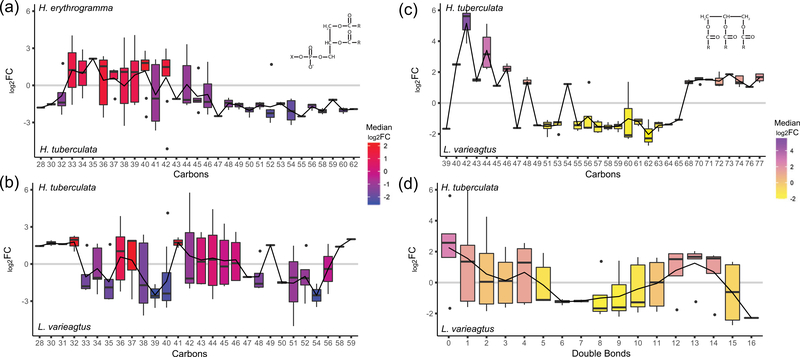FIGURE 4.
Species-specific structural differences within lipid classes highlights lipidomic molecular diversity across sea urchin species. (a) Among differentially abundant lipids, very short (28–32 carbons) and long (46+ carbons) chain length GPLs are relatively more abundant in Heliocidaris tuberculata than Heliocidaris erythrogramma eggs. GPLs more abundant in H. erythrogramma were enriched for fatty acid chain lengths between 33 and 40 carbons long. (b) A similar relationship was not quantified between H. tuberculata and Lytechinus variegatus eggs, so structural differences in GPL composition may reflect molecular remodeling of the large eggs of H. erythrogramma. Differentially abundant TAG between the two planktotroph species, H. tuberculata and L. variegatus, show species-specific differences in (c) fatty acid chain length and (d) degree of saturation. Box color indicates median log2 FC in GPL or TAG abundance between species for each chain length or number of double bonds. Black line traces the mean log2 FC in GPL or TAG abundance between species for each fatty acid chain length or number of double bonds. FC: fold-change; GPL: glycerophospholipid; TAG: triacylglycerols

